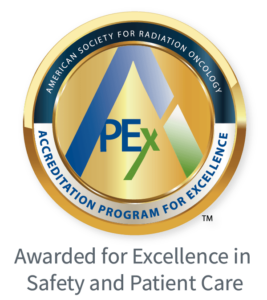Advanced Radiation Therapy for Sarcoma and Bone Cancer
What are sarcoma and bone cancers?

At Minneapolis Radiation Oncology, we bring advanced radiation therapy close to home, with 11 locations across the Twin Cities, Brainerd Lakes Area, and Western Wisconsin. Count on the cancer specialists at MRO to be here for you, with care, precision, and compassion.
Sarcomas and bone cancers develop when the cells that make up the bone, muscle, or connective tissues begin to grow out of control. Sarcoma and bone cancer are fairly rare. They account for about 1% of adult cancers, and 15 to 20 percent of childhood cancers.
True (or primary) bone tumors called sarcomas are malignant tumors that start in the bone itself. Sarcomas start in bone, muscle, fibrous tissue, blood vessels, fat tissue, and other soft tissue. The tumors can develop anywhere in the body.
When a tumor originates and grows inside tissue, it’s called primary sarcoma and bone cancer. Secondary bone cancer, the most prevalent type, forms when cancer cells spread (metastasize) from another part of the body to nearby bones.
“Radiation oncology allows me to combine my interests in patient care,
neuroscience, and medical technology.”
Nathan Hilton, MD
MRO | Brainerd
![]()
According to the National Cancer Institute, incidence rates for bone cancer and sarcoma have risen slightly since 1975, while mortality rates have dropped.
There are many different types of bone cancer and sarcoma.
Osteosarcoma, or osteogenic sarcoma, is the most common primary bone cancer. It starts in the bone cells of the arms, legs, or pelvis. It occurs most often in young people between the ages of 10 and 30.
Chondrosarcoma, the second most common primary bone cancer, starts in cartilage cells. Some chondrosarcomas have distinctive features, which can be seen with a microscope. There are several sub-types of chondrosarcoma:
- Dedifferentiated chondrosarcomas start out as typical chondrosarcomas, but some parts of the tumor change and begin to grow faster.
- Clear cell chondrosarcomas grow slowly. They’re rare, and seldom spread to other parts of the body.
- Mesenchymal chondrosarcomas can grow rapidly but respond to treatment with radiation and chemotherapy.
Ewing tumor is the third most common primary bone cancer, and the second most common in children, teens, and young adults. Most Ewing tumors develop in bones, but they can start in other tissues and organs. The most common sites for this cancer are the pelvis, chest wall, and legs or arms.
![]()
Malignant fibrous histiocytoma (MFH), also called pleomorphic undifferentiated sarcoma, most often starts in connective tissues. MFH in bones usually affects the legs or arms.
Fibrosarcoma develops more often in soft tissues than in bones. It usually occurs in elderly and middle-aged adults.
Giant cell tumor is a primary bone tumor that has both benign (the most common) and malignant forms. Giant cell bone tumors typically affect the legs or arms of young and middle-aged adults.
Chordoma is a primary bone tumor that usually occurs in the base of the skull and bones of the spine. It develops most often in adults older than 30 and is more common in men than women. Chordomas tend to grow slowly and often do not spread to other parts of the body.
Other cancers can be found in the bones, but don’t start in the bone cells and are not treated like primary bone cancer.
“I have the privilege to work with a dedicated group of healthcare professionals helping patients and their families through one of the most difficult challenges of their lives.”
Glenn Applegate, MD
MRO | New Richmond
